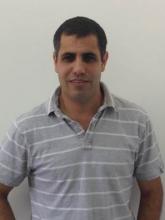
Tal Dvir
Head, Laboratory for Tissue Engineering and Regenerative Medicine
Tel Aviv University
Speech Title:
Advanced technologies for engineering functional cardiac tissues
Abstract:
The heart is a non-regenerating organ. Consequently, the loss of cardiac cells and formation of scar tissue after extensive myocardial infarction frequently leads to congestive heart failure. Given the scarcity of cardiac donors, a potential approach to treat the infarcted heart is to repopulate the ‘dead zone’ with cells capable of spontaneous contraction. Cellular therapy evolved to introduce cells into diseased areas and regain function. However, two main drawbacks of this approach are the lack of control of cell accumulation site after injection, and cell death before forming cell-cell or cell-matrix interactions. These shortfalls motivated the development of the tissue engineering concept, where 3-dimensional (3D) biomaterials serve as extracellular matrix-like scaffolds to the cells, enabling the cells to assemble into effective tissue substitutes, that may restore tissue or organ function. After transplantation the scaffolds either degrade or metabolize, eventually leaving a vital tissue instead of the defected tissue. In this talk I will describe cutting-edge technologies for engineering functional cardiac tissues, focusing on synthetic and natural biomaterials and the use of inorganic nanostructures for improving tissue function. In addition, I will present our engineered cyborg tissues, involving fusion of digital world with biomaterials and cells for controlling and monitoring the performances of engineered tissues. Finally, I will share my thoughts on the future of tissue engineering in general and cardiac tissue engineering in particular, and the potential of the described technologies to reach clinical settings.
Bio:
Tal Dvir (1974, Israel) obtained his Ph.D. degree from Ben-Gurion University of the Negev, Israel in 2008. His Ph.D. research was supervised by Prof. Smadar Cohen and focused on cardiac tissue engineering and regeneration. After a three-year postdoctoral period at Massachusetts Institute of Technology with Prof. Robert Langer, where he developed micro and nanotechnologies for tissue regeneration, he returned to Israel to establish the Laboratory for Tissue Engineering and Regenerative Medicine at Tel Aviv University.





